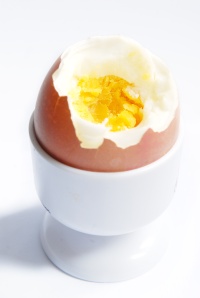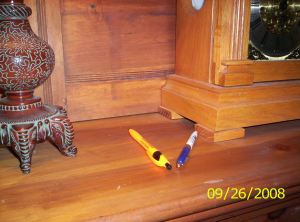1. I buy in bulk when I can and store things like dried beans in my pantry. I put a bay leaf in the container to keep out the pantry moths.
2. I freeze bags of beans, flour, cornmeal, cereal, etc. in the freezer before storing to kill any pantry moths that may be already in the packaging. I don’t mean to gross you out, but that is how you bring them into the house.
3. If I find pantry moths in dried beans, I don’t throw them out. I freeze for a day, then put aside for planting in the garden. Yes, dried beans are just seeds that will grow plants.
4. I try not to use paper towels very much. Clothes that are too worn for donation are cut in to rags and stored in those cloth containers that are sold for keeping plastic bags ( I made my own). The buttons, snaps, elastic and zippers are removed and stored for future use. I store the buttons in an blue antique canning jar and use it as a decoration. No buying $5 buttons because you want to keep a shirt.
5. We eat what is in season or what is growing in our garden. For this reason, I am always adding perennial vegetables and fruits so that there is always something to eat here. By the time we retire, I want this to be our Garden of Eden.
6. If potatoes aren’t currently growing in our garden and are very high cost in the stores (as they are now) we eat a lot of pasta and rice. I google recipes that use the ingredients I have.
7. I save all bacon grease and use this for seasoning cast iron. With cooking oil so high, this has saved much money. I’m even using it instead of oil or margarine to flavor dishes. I believe the benefits of natural products like butter or grease are better than those for man-made products like margarine or partially hydrogenated oils. (but that’s a whole ‘nother essay!) No, I’m not overweight, don’t have diabetes or high cholesterol.
8. Speaking of cast iron—I’m a big fan. All of mine has been found at yard sales and thrift stores. Usually it looks rusted, and I have cleaned them up and seasoned them and they work great. Once seasoned, you don’t have to use oil to keep things from sticking. I use my pans to make stir fry several times a week. I don’t allow any “nonstick” pans in my home after reading about EPA’s studies. Did you know that pet birds often die when these pans are used in the same room? That’s enough evidence for me that they are not worth their “non-stickiness”.
9. Another reason I use cast iron is to add iron into our diets. It’s one of the best ways to do it. It’s free and a better way to get iron.
10. Because we eat a very healthy diet that includes freshly picked fruits and vegetables, we don’t buy vitamins. Nutritionists will tell you that nature has made the vitamins in our food in the most appropriate way for us to absorb the nutrients. No pill is better than eating fruits and vegetables.
11. Unless the skin is thick and unsightly, I don’t peel potatoes. Mostly we grow our own and these have thin skins so it’s not a problem. Why do I do this? Because many of the nutrients of potatoes are found in the skins (see # 10 above.)
12. When bananas get a little brown (or a lot brown!) I pop them in the freezer (whole) and defrost later to add to muffins and other dishes. Why throw away nutrients?
13. We must haul our own garbage, so it makes you think twice (or three times) about your carbon footprint, as they say. All paper products are recycled at home. Even the glossy colored paper is reused—that goes in the bottom of my refrigerator vegetable drawers topped with a paper towel. This makes it easy to clean up messy things that have leaked.
14. I only buy plain yogurt and we flavor it as we use it with fruit, jam, or cinnamon and sugar. In this way, we eat a lot less preservatives and sugar. Store bought flavored yogurt is WAY too sweet. Also, we are able to use the yogurt in place of sour cream—way healthier. Yogurt is important to the health of your gut. You don’t need to buy the more expensive “probiotic” brands. Any yogurt with active culture will do. If antibiotics make your tummy feel badly, have some yogurt to restore the good bacteria that the antibiotics destroyed (while killing the bad bacteria.)
15. Last but not least, we put our hot water heaters on a timer so that we are not heating it through the night. This has saved us a lot of money over the years. Hot water is approximately 40% of your electric bill, so it’s a significant savings! The water stays hot for an hour or so after it’s turned off. Ours turns off at 10p.m. and turns on at 6a.m.. We turn it totally off when we are away for more than a day.
















